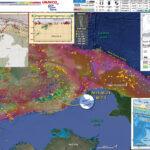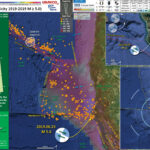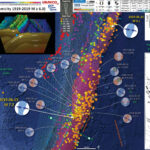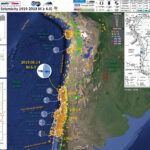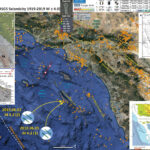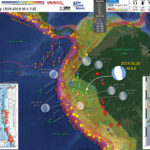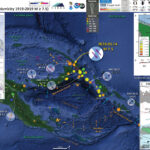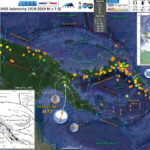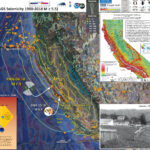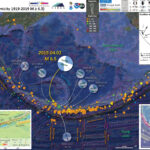I had been making an update to an earthquake report on a regionally experienced M 5.6 earthquake from coastal northern California when I noticed that there was a M 7.3 earthquake in eastern Indonesia. https://earthquake.usgs.gov/earthquakes/eventpage/us600044zz/executive This earthquake is in a…
Earthquake Report: Mendocino triple junction
Well, I was on the road for 1.5 days (work party for the Community Village at the Oregon Country Fair). As I was driving home, there was a magnitude M 5.6 earthquake in coastal northern California. https://earthquake.usgs.gov/earthquakes/eventpage/nc73201181/executive I didn’t realize…
Earthquake Report: Kermadec Trench
There was just an earthquake associated with the plate boundary that forms the Kermadec Trench, a deep oceanic trench that extends north from New Zealand, towards the Fiji Islands. https://earthquake.usgs.gov/earthquakes/eventpage/us6000417i/executive A minor tsunami (~25 cm in size) has been recorded…
Earthquake Report: Chile
This morning (my time) there was a magnitude M 6.4 earthquake offshore of Chile. While it was in the correct location to possibly cause a tsunami, the magnitude was too small. https://earthquake.usgs.gov/earthquakes/eventpage/us600040ja/executive The major plate boundary here is the megathrust…
Earthquake Report: San Clemente Island
Well, yesterday was the start of a sequence of earthquakes offshore of San Clemente Island, about 100 km west of San Diego, California. The primary tectonic player in southern CA is the Pacific – North America plate boundary fault, the…
Earthquake Report: Peru
Just a moment ago, there was an intermediate depth Great Earthquake (magnitude M≥8.0) beneath Peru. I was heading to bed at about 1:10 local time (Sacramento, CA) when I noticed a tweet from Dr. Anthony Lomax (presenting his first motion…
Earthquake Report: New Ireland
This region of Earth is one of the most seismically active in the past decade plus. This morning, as I was preparing for work, I got an email notifying me of an earthquake with a magnitude M = 7.5 located…
Earthquake Report: Papua New Guinea
Earlier today, there was an intermediate depth beneath eastern Papua New Guinea (PNG). With a magnitude M = 7.2, this is one of the largest earthquake so far in 2019. Here is the USGS website for this earthquake. Today’s earthquake…
18 April 1906 San Francisco Earthquake
Today is the anniversary of the 18 April 1906 San Francisco Earthquake. There are few direct observations (e.g. from seismometers or other instruments) from this earthquake, so our knowledge of how strong the ground shook during the earthquake are limited…
Earthquake Report: central Aleutians
A couple days ago, in my inbox, there was an email from the Pacific Tsunami Warning Center about an earthquake along the Aleutian Islands, near Rat Island, Alaska. However, this earthquake was not along the megathrust subduction zone fault there…
